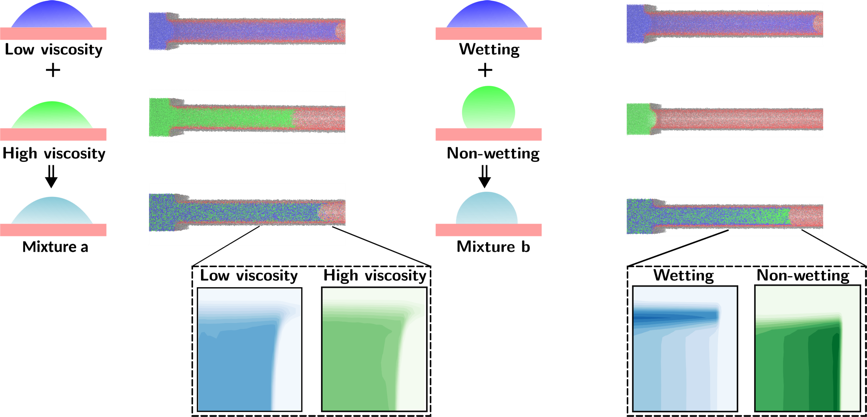PROJECT AIM
Water-based ink for ink-jet printing on paper contains several components in addition to pigment particles. With the water content of the droplet gradually decreasing through evaporation and imbibition into the paper, a solidifying deposit is left at the surface of (and partly inside) the paper. A good ink produces a well-defined and lasting deposition of pigment particles. The aim of the project is to study the evolution of ink droplets deposited on paper at the mesoscopic level. The project entails modeling both the ink, a complex liquid, and the paper, a complex solid.
PROject Discription
Binary liquid mixtures are used as solvents in jetting inks, and they can significantly affect the ink-paper interaction. Hence, we first studied the capillary imbibition of binary mixtures into cylindrical nanopores. For pairs of fluids differing in their viscosities only the less viscous fluid is slightly enriched at the imbibition front. Surprisingly, for mixtures differing in their wettability only, the less wettable component is significantly enriched at the imbibition front. This effect is attributed to the more wetting fluid forming a monolayer covering the walls, acting as a lubrication layer for the less wetting fluid (see right column of Figure 1).

Figure 1: Schematic of the capillary imbibition of binary mixtures into a nanopore. (Left) Pairs of fluids varying in their viscosity only. The concentrations of the two fluids are almost equal near the wetting front. (Right) Pairs of fluids varying in their wettabilities only. The concentration of the non-wetting fluid at the wetting front is significantly higher than its wetting counterpart.
